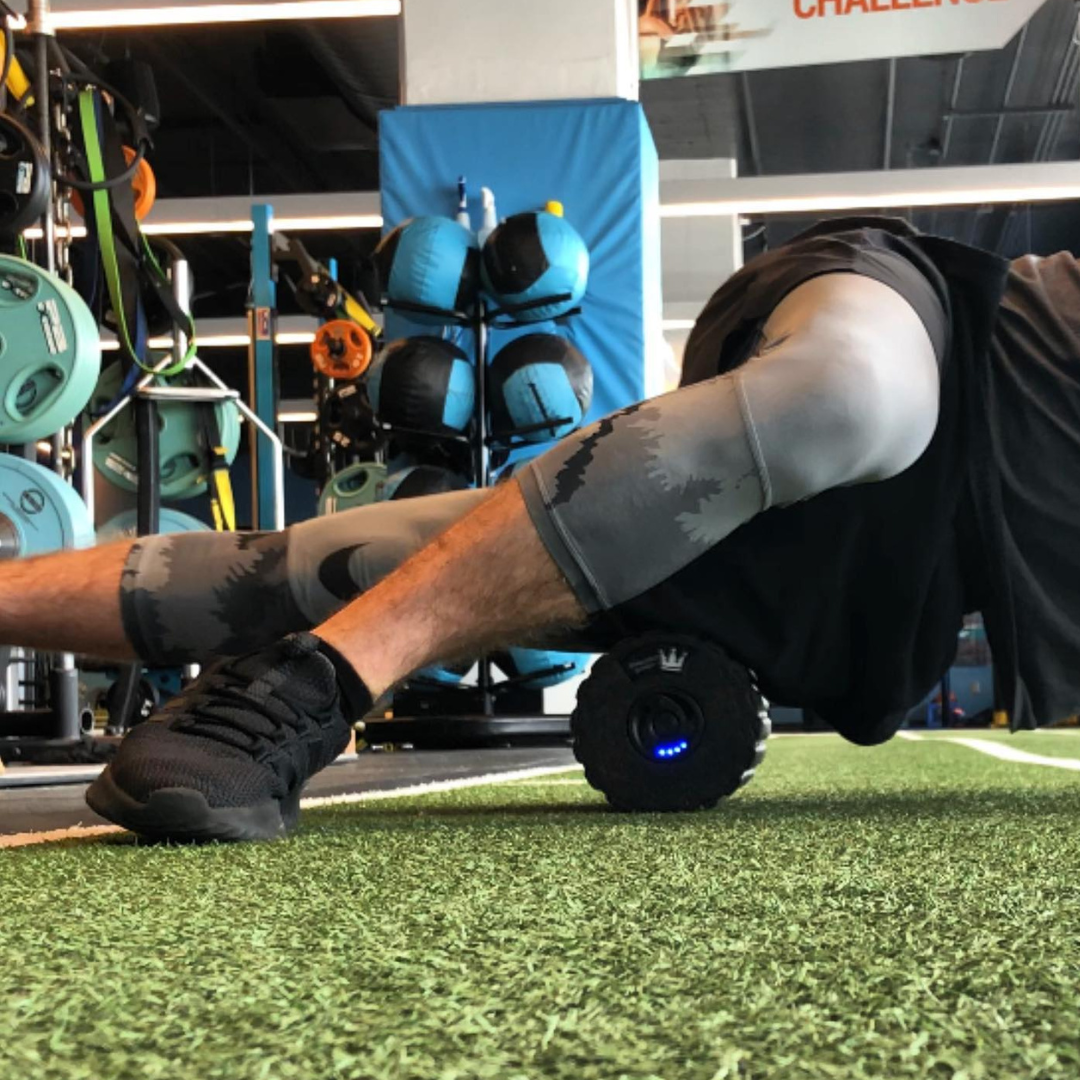The Science Behind Foam Rolling: How this Recovery Tool Can Boost Your Fitness Performance
Improved Muscle Recovery
Foam rolling, a self-myofascial release technique, has gained popularity in the fitness world for its ability to enhance muscle recovery. By using a foam roller, you can apply pressure to specific muscle groups, promoting blood flow and releasing muscle tension.
Benefits of foam rolling for muscle recovery:
- Breaks up adhesions and scar tissue in the muscles
- Increases nutrient and oxygen delivery to the muscles
- Flushes out metabolic waste products such as lactic acid
- Reduces muscle soreness and inflammation
Preventive Measures to Avoid Injuries
Beyond muscle recovery, foam rolling also plays a crucial role in injury prevention. When used correctly, foam rolling can address muscle imbalances, improve flexibility, and correct muscle alignment, reducing the risk of injuries during physical activities.
Key benefits of using foam rollers for injury prevention:
- Increases range of motion in joints and muscles
- Identifies and addresses muscle imbalances
- Promotes proper posture and alignment
- Reduces the risk of overuse injuries and strains
Enhanced Athletic Performance
Foam rolling has been shown to enhance athletic performance, making it a valuable tool for athletes, runners, and fitness enthusiasts seeking optimal performance.
Ways foam rolling can boost athletic performance:
- Improves flexibility and mobility, enhancing movement efficiency
- Enhances muscle activation and recruitment
- Increases muscular power and strength
- Improves neuromuscular coordination and proprioception
Complementary Techniques for Maximum Results
While foam rolling is an effective recovery tool on its own, combining it with other recovery techniques can further maximize its benefits:
Some complementary techniques to enhance foam rolling:
- Hydration: Proper hydration aids in muscle recovery and prevents muscle cramps.
- Sleep: Sufficient sleep allows your body to repair and regenerate muscles.
- Nutrition: A balanced diet provides the nutrients necessary for muscle recovery and performance.
- Meditation: Reducing stress through meditation promotes overall well-being and aids in recovery.
- Stretching: Incorporating dynamic and static stretching exercises improves flexibility and range of motion.
- Ice Bath: Cold therapy reduces inflammation and muscle soreness post-exercise.
- Proper Footwear: Wearing appropriate shoes enhances support and reduces the risk of injuries.
- Recovery Slides: Sliding discs can be used for low-impact strength and stability exercises.
Understanding the science behind foam rolling empowers fitness enthusiasts, athletes, and runners to optimize their performance and recovery. By incorporating foam rolling into your fitness routine and combining it with other recovery techniques, you can unlock your body's full potential and achieve peak performance.
Incorporating Foam Rolling into Your Fitness Routine

Now that you understand the benefits of foam rolling for muscle recovery, injury prevention, and athletic performance, it's time to incorporate this valuable tool into your fitness routine. Here are some tips to help you get started:
- Choose the right foam roller: There are various types of foam rollers available, including smooth foam rollers, textured foam rollers, and vibrating foam rollers. Experiment with different types to find the one that works best for your needs and preferences.
- Target specific muscle groups: Focus on the muscle groups that are tighter or more prone to soreness. Spend extra time rolling these areas to release tension and promote muscle recovery.
- Apply appropriate pressure: Start with light pressure and gradually increase as your muscles adjust to the foam rolling. Remember that foam rolling should be slightly uncomfortable but not painful.
- Roll slowly and mindfully: Roll your body over the foam roller, pausing on any tight or tender spots. Move slowly and mindfully to allow the muscles to relax and release.
- Combine foam rolling with other recovery techniques: To maximize the benefits of foam rolling, combine it with other recovery techniques such as stretching, ice baths, and proper nutrition. Creating a comprehensive post-workout recovery routine will help you achieve optimal results.

When to Seek Professional Guidance
If you're new to foam rolling or have any existing injuries or medical conditions, it's advisable to consult with a qualified fitness professional or healthcare provider. They can guide you on proper foam rolling techniques and provide personalized recommendations based on your specific needs and limitations.
Additionally, if you experience severe pain or discomfort during foam rolling, it's essential to stop and seek professional advice. Foam rolling should never cause excessive pain or exacerbate existing injuries.
Incorporating Foam Rolling into Your Routine for Maximum Benefits
Foam rolling is a valuable tool for enhancing muscle recovery, preventing injuries, and boosting athletic performance. By understanding the science behind foam rolling and following proper techniques, you can optimize the benefits it offers.
Make foam rolling a regular part of your fitness routine, focusing on key muscle groups and combining it with other recovery techniques. Whether you're an athlete, runner, or fitness enthusiast, foam rolling can help you achieve peak performance and maintain overall fitness and well-being.
So, grab your foam roller and start incorporating this effective recovery tool into your fitness routine. Experience the science-backed benefits of foam rolling and take your fitness performance to new heights!
Proper Foam Rolling Techniques
To reap the maximum benefits of foam rolling and ensure effective muscle release, it's essential to use proper techniques. Here are some guidelines to follow:
- Start with a warm-up: Before foam rolling, perform a light warm-up to increase blood flow and prepare your muscles for the release. This can include dynamic stretching or a few minutes of light cardio.
- Focus on specific muscle groups: Determine the areas of your body that need attention, such as the calves, quads, glutes, or upper back. Direct the foam roller to these muscles and apply pressure accordingly.
- Use slow and controlled movements: Roll slowly and smoothly over the target muscles, allowing the foam roller to sink into any tight or tender spots. Avoid quick and erratic movements.
- Take deep breaths and relax: While foam rolling, take deep breaths to relax your muscles and facilitate the release of tension. Avoid holding your breath or tensing up during the process.
- Apply gentle to moderate pressure: Find the level of pressure that feels comfortable yet effective for you. It should be firm enough to stimulate the muscles but not cause excessive pain or discomfort.
- Stay away from bony areas and joints: Avoid rolling directly over bony prominences or delicate joints to prevent injury. Focus on the surrounding soft tissues instead.
- Modify the angle and position: Experiment with different angles and positions to access different muscle fibers and areas of tension. You can vary the pressure by lying directly on the foam roller or using your hands for support.
Integrating Foam Rolling into Your Warm-up and Cool-down
While foam rolling is commonly associated with post-workout recovery, it can also be beneficial when incorporated into your warm-up routine. By utilizing foam rolling before physical activity, you can prime your muscles for optimal performance and reduce the risk of injuries. Here's how:
- Target the major muscle groups: Choose key muscle groups that are involved in your workout or sport. Spend a few minutes foam rolling these areas to increase blood flow, enhance muscle activation, and improve flexibility.
- Combine foam rolling with dynamic stretching: After foam rolling, perform dynamic stretching exercises that involve active movements through a full range of motion. This will further warm up the muscles, lubricating the joints and enhancing mobility.
Similarly, incorporating foam rolling into your cool-down routine can aid in reducing muscle soreness, promoting recovery, and preparing your body for future workouts. After completing your exercise session, follow these steps:
- Foam roll the major muscle groups: Focus on the muscle groups you worked during your workout and spend additional time on any particularly tight or tender areas.
- Follow up with static stretching: Perform static stretches, holding each stretch for 15-30 seconds, to further enhance muscle relaxation and flexibility. Target the muscles that were heavily engaged during your workout.
Listening to Your Body
When incorporating foam rolling into your fitness routine, it's essential to listen to your body's cues and adjust the pressure and duration accordingly. While some discomfort can be expected, it should not be excessively painful. If you experience sharp or intense pain, you should stop immediately and seek professional guidance.
Add foam rolling gradually into your routine, starting with shorter durations and lighter pressure. As your body adapts and becomes more familiar with this recovery technique, you can gradually increase the intensity and duration of your foam rolling sessions.
Remember that consistency is key; regular foam rolling can lead to cumulative benefits over time. Aim to incorporate foam rolling into your routine two to three times per week, or even daily if necessary, to promote optimal recovery and enhance your fitness performance.
Take Your Fitness Performance to New Heights
Understanding the science behind foam rolling empowers fitness enthusiasts, athletes, and runners to optimize their performance and recovery. By incorporating foam rolling into your fitness routine and combining it with other recovery techniques, you can unlock your body's full potential and achieve peak performance.
Make foam rolling a regular part of your fitness routine, focusing on key muscle groups and combining it with other recovery techniques. Whether you're an athlete, runner, or fitness enthusiast, foam rolling can help you achieve peak performance and maintain overall fitness and well-being.
So, grab your foam roller and start incorporating this effective recovery tool into your fitness routine. Experience the science-backed benefits of foam rolling and take your fitness performance to new heights!
Conclusion
As we have discovered, foam rolling offers a myriad of benefits that can enhance your fitness performance. It aids in muscle recovery, prevents injuries, and improves overall athletic performance. By applying pressure to specific muscle groups, foam rolling promotes blood flow, releases tension, reduces inflammation, and helps maintain proper muscle alignment.
Incorporating foam rolling into your warm-up, cool-down, and recovery routine can make a significant difference. Remember to use proper techniques, listen to your body, and combine foam rolling with other recovery techniques for optimal results. With consistency and dedication, foam rolling can become an essential part of your fitness regimen, helping you achieve your goals and unlock your body's full potential.



